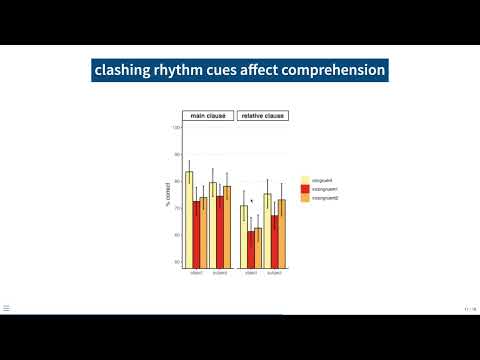 Speaker: Courtney Hilton @CourtneyHilton
Speaker: Courtney Hilton @CourtneyHilton
 Affiliation: School of Psychology, University of Auckland (NZ)
Affiliation: School of Psychology, University of Auckland (NZ)
Title: Hearing hidden meter: How syntax shapes the perception of metrical rhythm
Abstract (long version below): In this symposium, results from research using different methods such as pupillometry, eye-tracking, EEG, or applied informatics such as neural network analysis are presented with respect to empirical literary sciences to discuss how phenomena related to the genuine poetic rhythm and associated cognitive effects can be explored. The focus is twofold: A) Advantages and disadvantages of the respective method and its combinability with other methods are to be thematized. B) Based on the results from the respective approaches presented, the extent to which they provide information about cognitive processing, respectively, experiencing of poetic rhythm will be debated.

 Long abstract
Long abstract
When we perceive the metrical structure of speech, we are doing more than just passively listening to the timing and stress patterns found in the acoustic signal. As fluent speakers, we also apply our linguistic knowledge to actively predict likely metrical patterns based on specific syntactic or lexical forms. This top-down knowledge based on our linguistic competence combines with the bottom-up acoustical cues to form robust perceptions that align with our goal of understanding the linguistic messages being conveyed. In this talk, I discuss two studies [1, 2] that support this view of online metrical perception. I then discuss the implications of this view for the theoretical relation between speech rhythm and musical rhythm generally, and end with more specific reflections on a notion of ‘metrical syncopation’ in poetry and song.
References
1.Hilton, C. B., & Goldwater, M. B. (2021). Linguistic syncopation: Meter-syntax alignment affects sentence comprehension and sensorimotor synchronization. Cognition, 217, 104880. Redirecting
2.Hilton, C.B., Moser, C.J., Bertolo, M. et al. (2022). Acoustic regularities in infant-directed speech and song across cultures. Nat Hum Behav 6, 1545–1556. Acoustic regularities in infant-directed speech and song across cultures | Nature Human Behaviour

